Art Fairs
On Its 100th Anniversary, Surrealism Takes Over Belgium’s BRAFA Art Fair
This year, the Brussels fair pays homage to the subconscious-delving art movement.
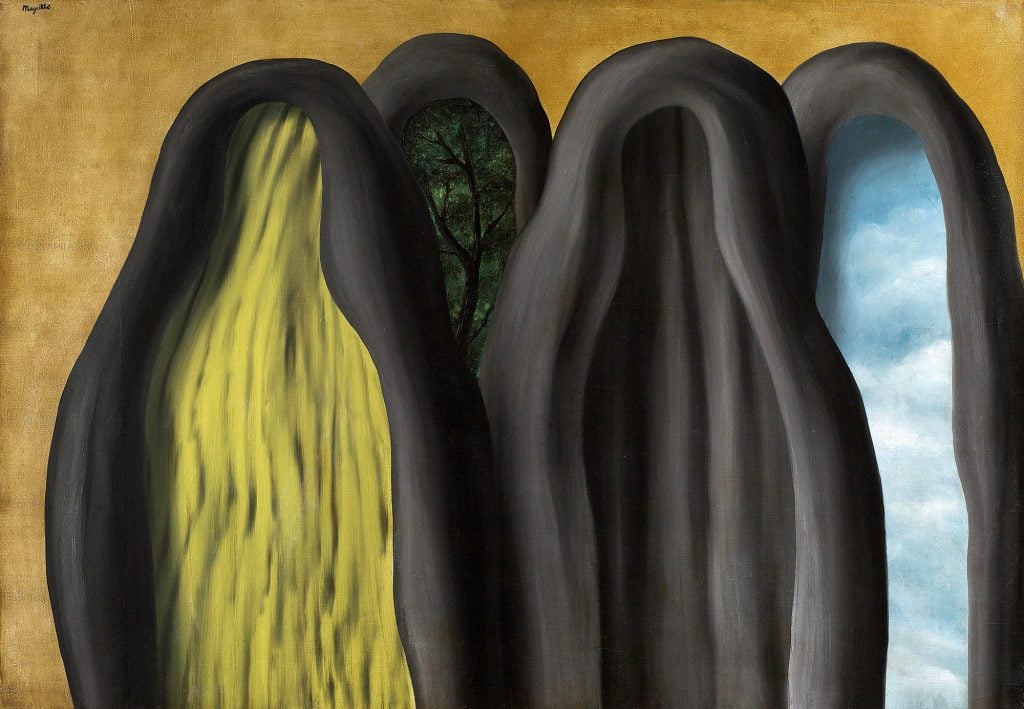
This year, 2024, marks the centenary of Surrealism—a full 100 years since the poet and critic André Breton debuted the Surrealist Manifesto. Not only that, it’s also been a century since the writer Paul Nougé—known as the Belgian Breton—co-founded the journal Correspondance. Each single-page issue put into practice Surrealist theories of experimentation, chance, and the subconscious.
Celebrating the double milestone, the organizers of BRAFA Art Fair—the largest and longest-running in Belgium—have claimed the tradition-breaking, dream-delving art movement as the theme of their 69th edition, held in the cavernous Brussels Expo from January 28 to February 4.
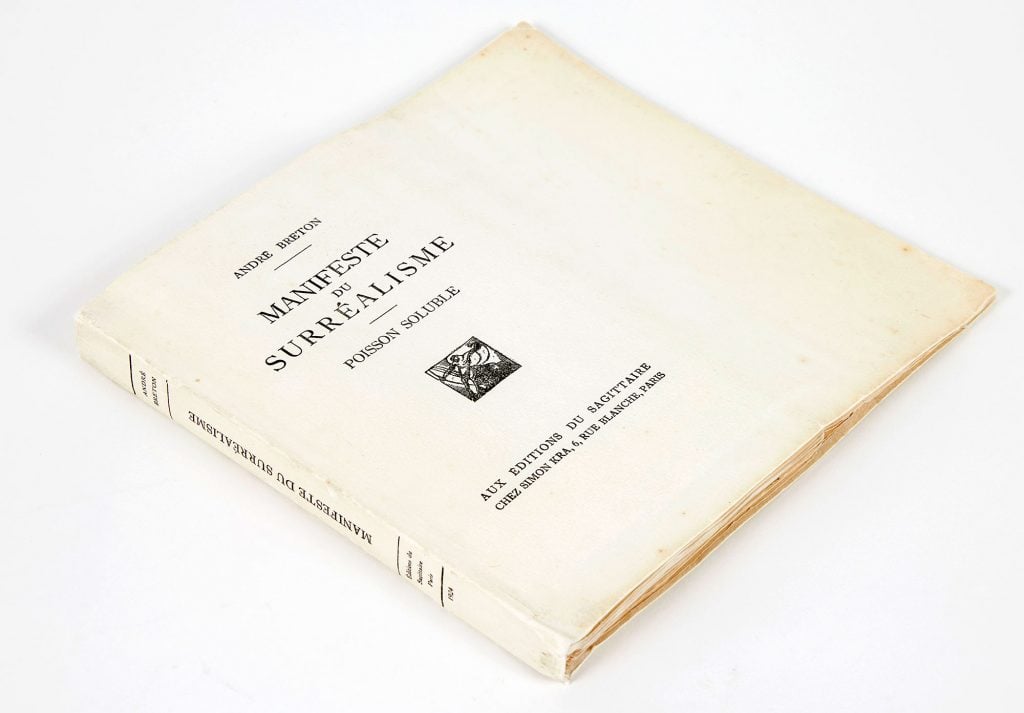
André Breton, Surrealist Manifesto (1924), first edition. Brought by Librairie Lardanchet.
Many of the fair’s 132 exhibitors are, too, running with the Surrealist theme, such as Paris-based gallery Librairie Lardanchet, which has brought an original copy of the Surrealist Manifesto, one of only 19 to survive. In addition, Belgium’s homegrown Surrealist, René Magritte, makes several appearances. The artist’s cryptic 1928 painting Le Palais de Rideaux is showing at Galerie de la Béraudière’s booth, while his 1950 drawing La Légende des Siècles can be found at De Jonckheere, from the gallery’s Geneva headquarters.
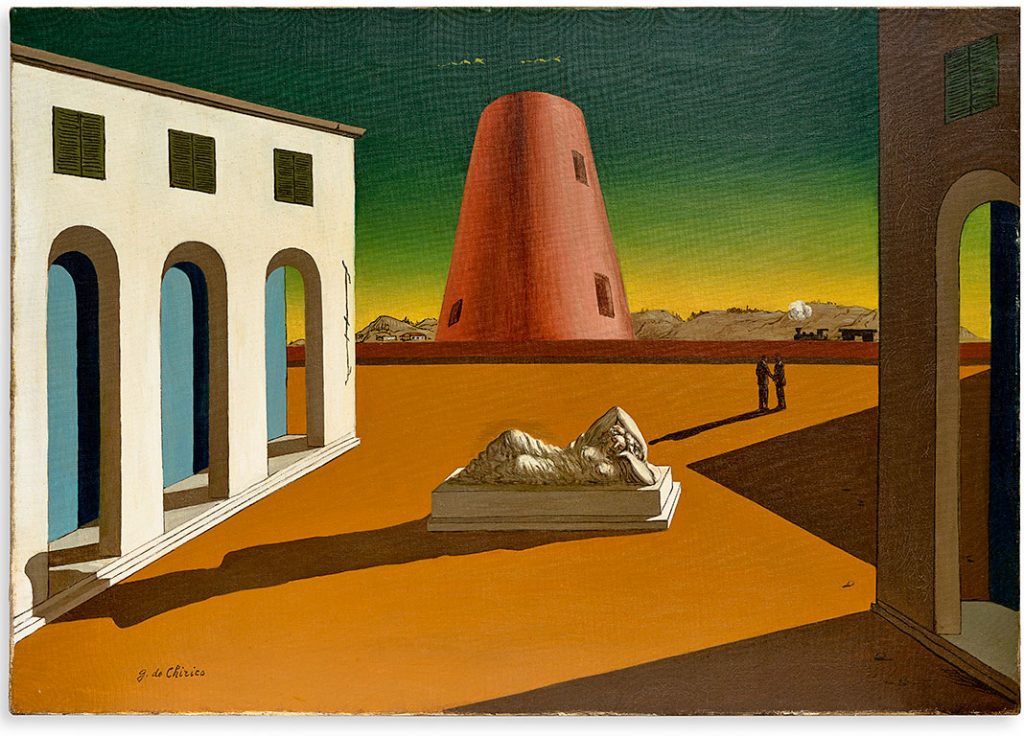
Giorgio de Chirico, Piazza d’Italia con Arianna (beginning 1950s). Shown at Repetto Gallery at BRAFA.
Elsewhere, Repetto Gallery is offering two works by Giorgio de Chirico, Piazza d’Italia and Piazza d’Italia con Arianna—each exhibiting the artist’s metaphysical approach to painting, with their dreamlike atmosphere and mix of modern and classical components—while a drawing by Léon Tutundjian is on display at Marseille’s Galerie Alexis Pentcheff. The Armenian-French artist blended elements of Surrealism and Cubism, and was a founding member of Art Concret, which emphasized geometry and harmony.
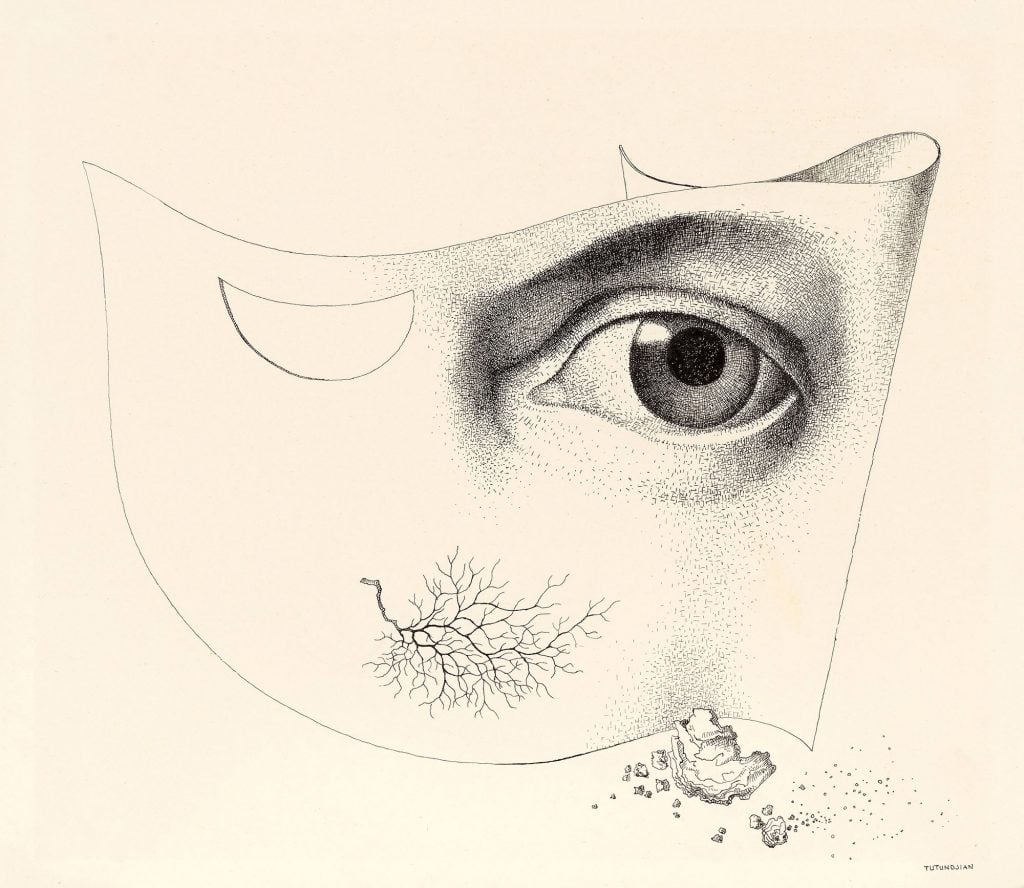
Leon Tutundijan, Untitled. Brought by Galerie Alexis Pentcheff.
This year BRAFA is honoring Paul Delvaux, another central figure on the Surrealist landscape, even if he only briefly identified with the movement. The Paul Delvaux Foundation was asked to exhibit 15 paintings from its own collection and from a private collection on loan to the artist’s museum in Saint-Idesbald, Belgium, near where he lived. These works, which are not for sale, span the 1930s to the 1960s, when he attracted international popularity and the attention of Andy Warhol, who immortalized him in a series of screenprints.
For its part, Belgian gallery Boon has brought Delvaux’s 1944 painting La Ville Lunaire, while Francis Maere Fine Arts has brought L’été (1963), Galerie Taménaga is offering La Tente Rouge (1966), and Opera Gallery of Geneva hopes to find a buyer for his 1968 masterpiece La Fin du Voyage.
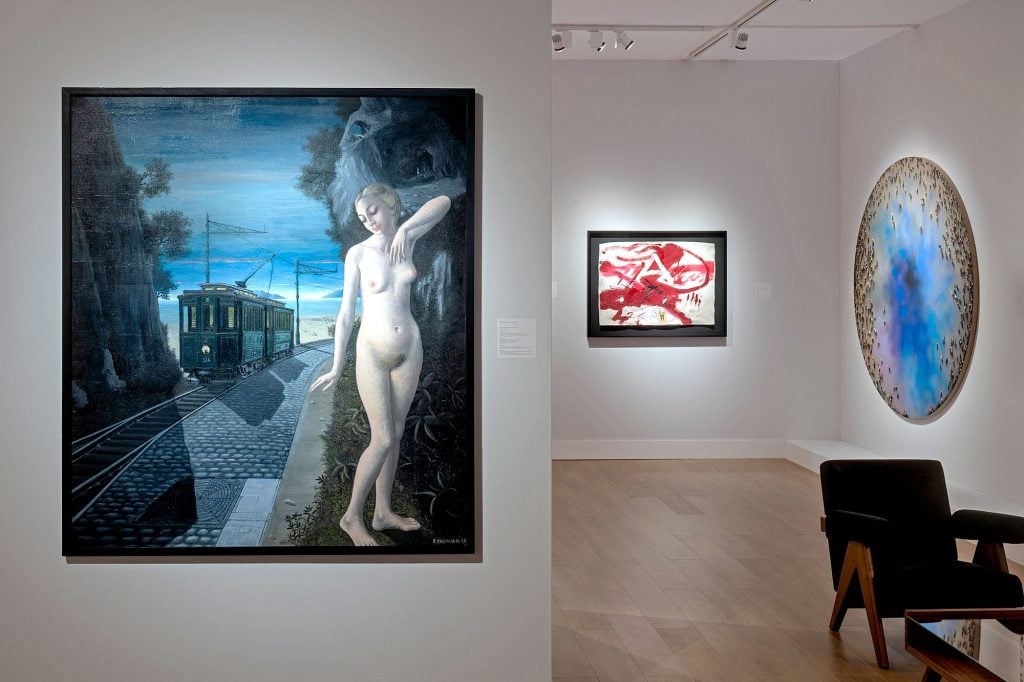
Opera Gallery’s booth at BRAFA 2024, including Paul Delvaux’s La Fin du Voyage (1968) at left. Photo © Emmanuel Crooy
BRAFA also features contemporary artists taking a Surrealist approach. Brussels gallery Rodolphe Janssen is offering new works by Sean Landers, Tom Poelmans, Emily Mae Smith and Thomas Lerooy, while Bernier/Eliades Gallery has brought works in a variety of disciplines by Martin Margiela, the Belgian artist and former fashion designer who subverted modern dress through deconstruction.
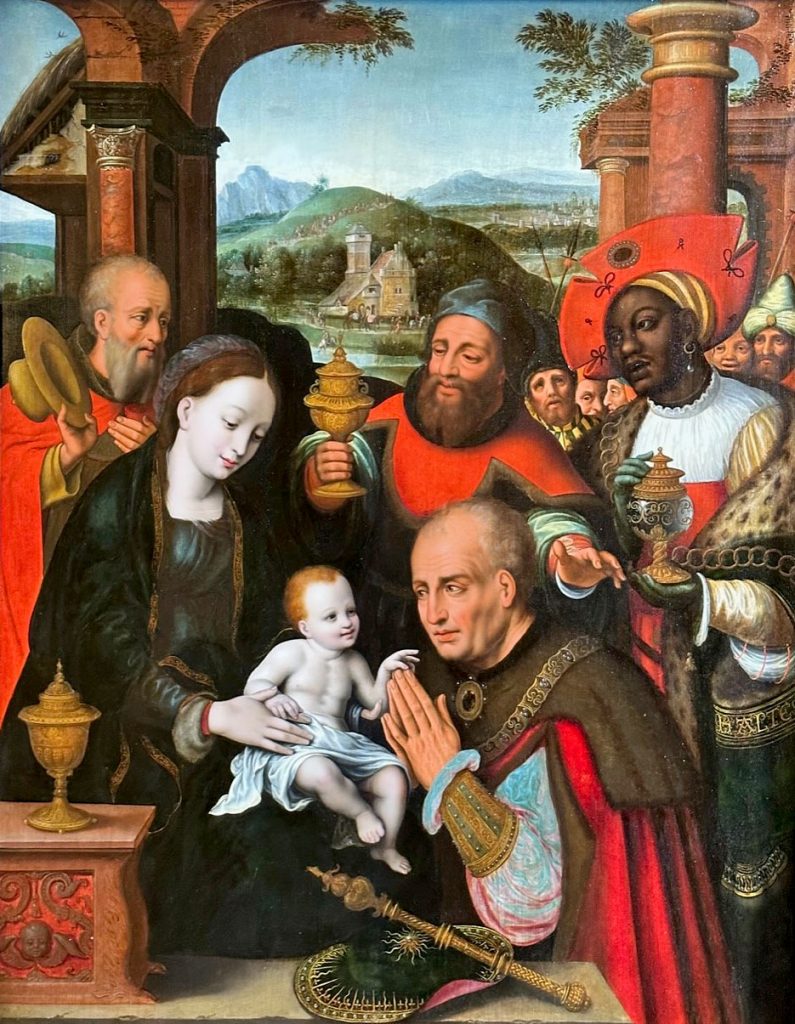
Cornelis Van Cleve, Adoration des Mages. Brought by Galerie Florence de Voldère, Paris.
On the Old Master front, BRAFA first-timer Nicolás Cortés Gallery from Madrid has brought two portraits by the 16th-century Italian Mannerist artist Lavinia Fontana, widely considered the first female career artist in Western Europe. Galerie Florence de Voldère makes its BRAFA debut, too, with Adoration des Mages by the 16th-century Belgian artist Cornélis van Cleve, the son and student of Antwerp master Joos van Cleve.
See more works from BRAFA Art Fair, Surrealist and otherwise:
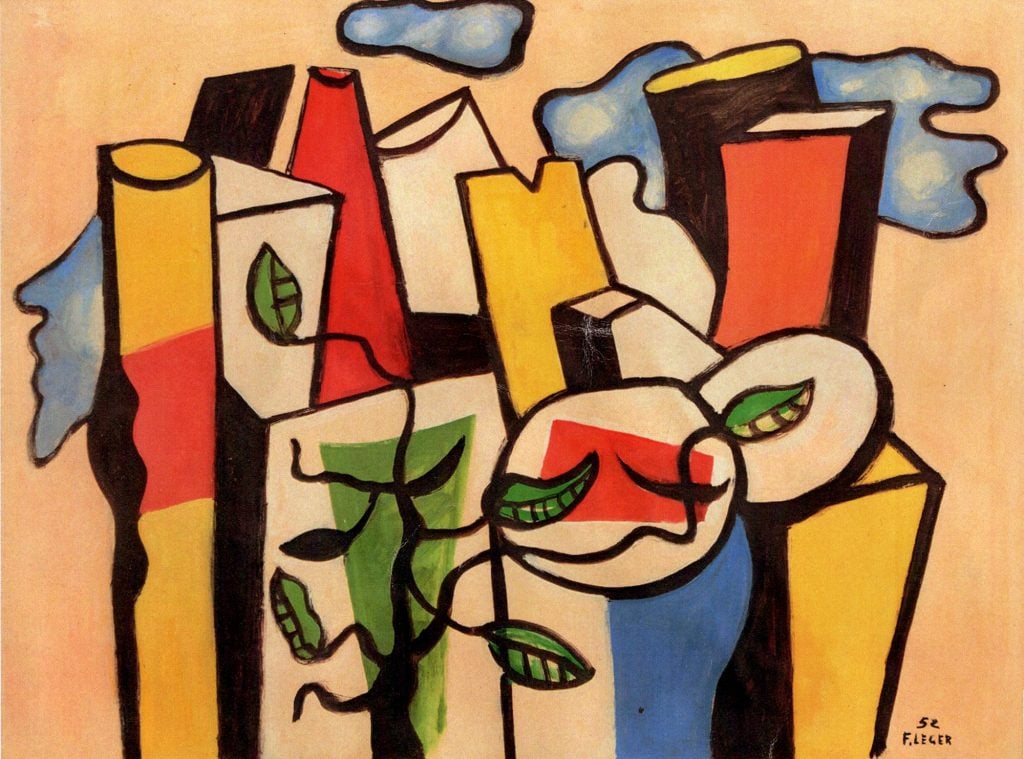
Fernand Léger, Les Buches (1952). Brought by Robertaebasta Gallery, London.
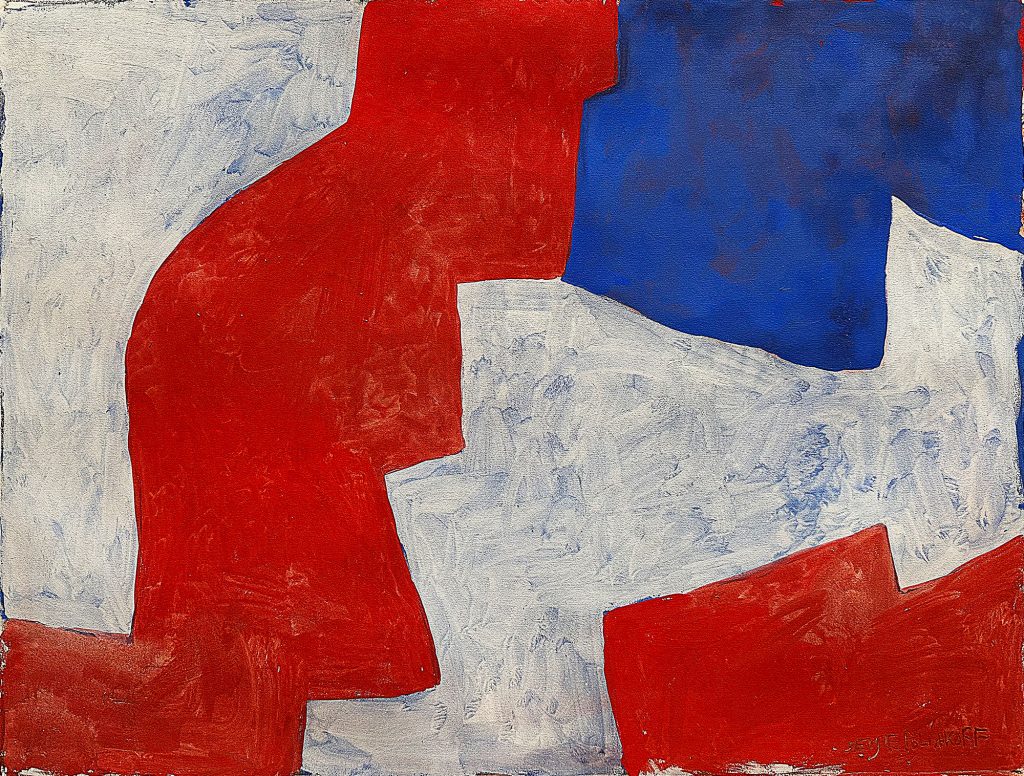
Serge Poliakoff, Abstract Composition (1960). Brought by Galerie des Modernes, Paris.
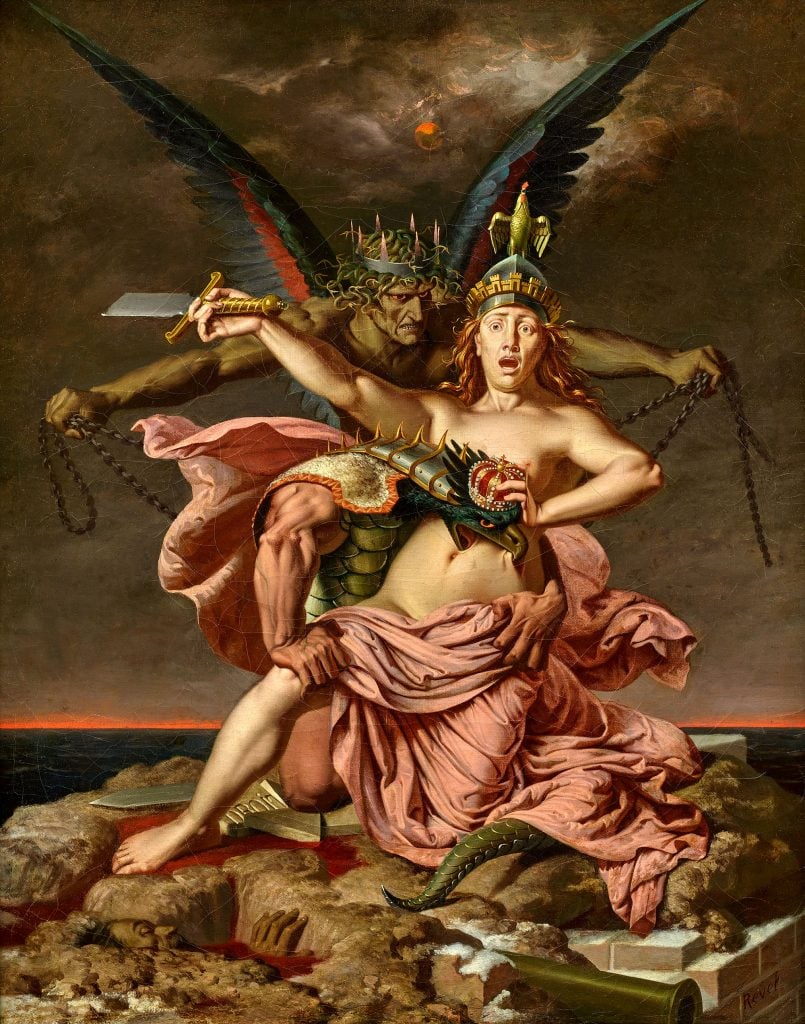
Charles Revel, Allégories de la Force et du Droit (ca. 1872). Brought by Segoura Fine Art, France.
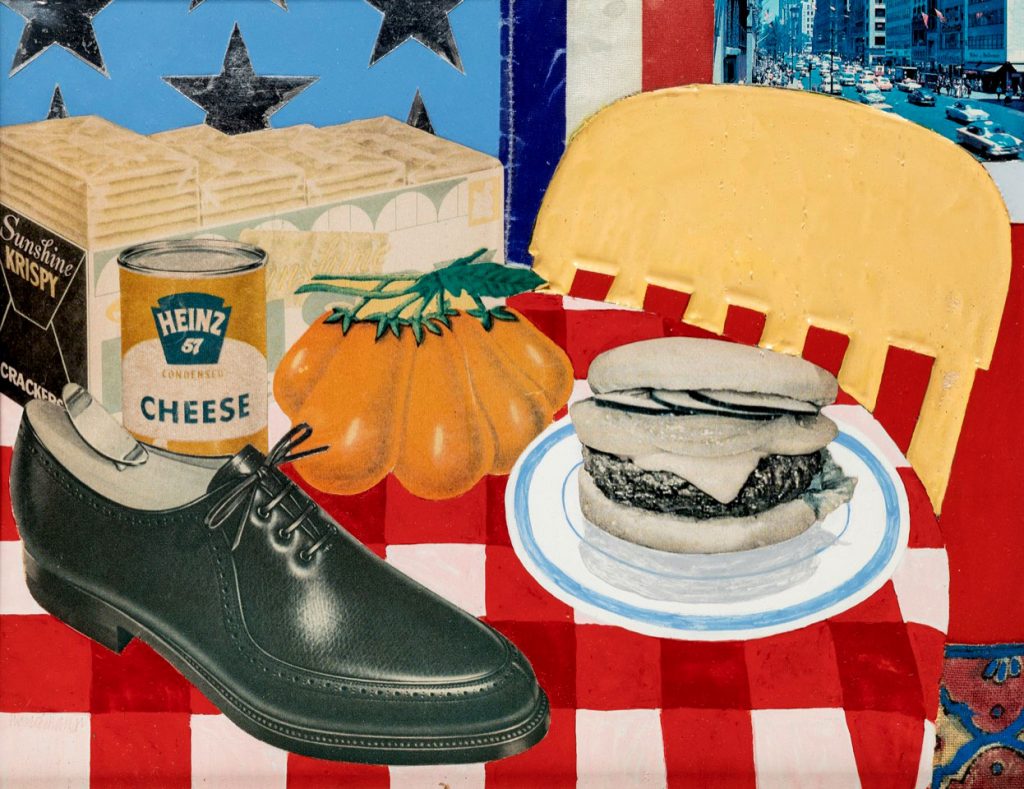
Tom Wesselmann, Little Still Life #4 (LGASL #4) (1962). Brought by Samuel Vanhoegaerden Gallery, Belgium.
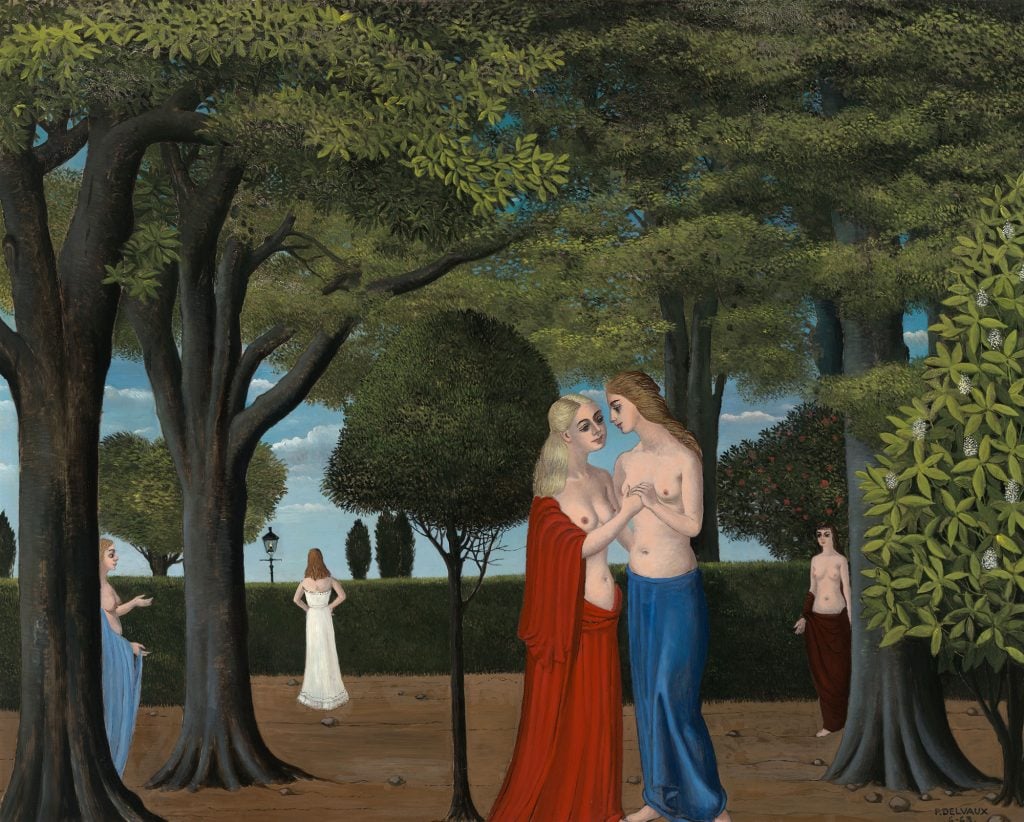
Paul Delvaux, The Summer (1963). Brought by Francis Maere Fine Arts, Belgium.
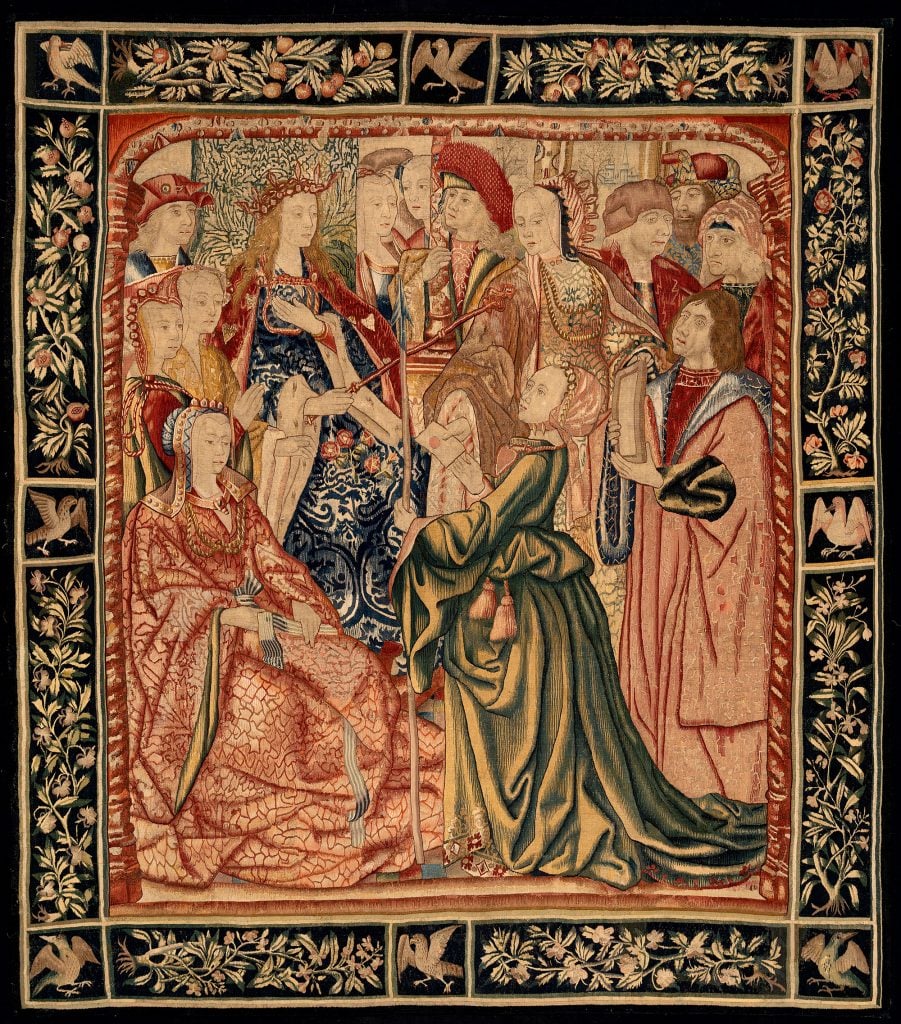
Tapestry showing a court scene, Southern Netherlands, probably Brussels, early 16th century. Brought by De Wit Fine Tapestries, Belgium.





